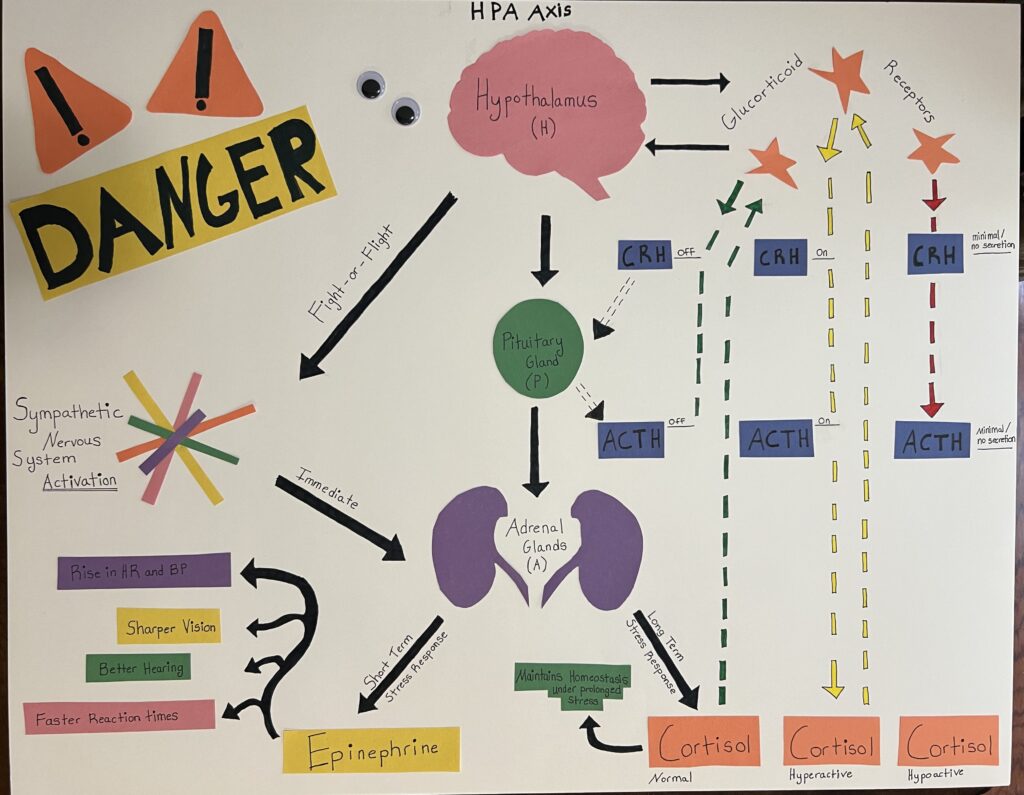This art project provides a diagram depicting the pathway of the hypothalamic-pituitary-adrenal axis that is responsible for regulating cortisol secretion in response to stress. Also pictured are examples of dysfunctional HPA axis cortical pathways in comparison to a normal cortical negative feedback loop.


Naomi’s STEAM project piece provided a nice visualization of how the stress response works and what happens when it dysfunctions. Naomi’s diagram explains how the HPA axis is involved in the activation of the stress response through triggering of the sympathetic nervous system that promotes release of epinephrine. This is called the flight or fight response in which the body reacts physiologically to real or perceived threats. The flight or fight response elevates the heart, blood pressure, sharpens vision and hearing, as well as enhances reflexes.
When a person experiences chronic stress this disrupts the stress response and decreases the hypothalamus-pituitary adrenal axis. To maintain homeostasis, cortisol release is intiated after epinephrine release. Hypoactivity of the HPA axis is the result of the decrease of corticotropin releasing hormone (CRH) and adrenocorticotropic hormone (ACTH) and can result in Addison’s disease. Hyperactivity of the HPA axis is the result of continuous release of CRH and ACTH which can cause the body to be less sensitive to glucocorticoid receptors leading to excess release of cortisol. This can result in glucocorticoid resistance, such as what happens in Cushing syndrome.